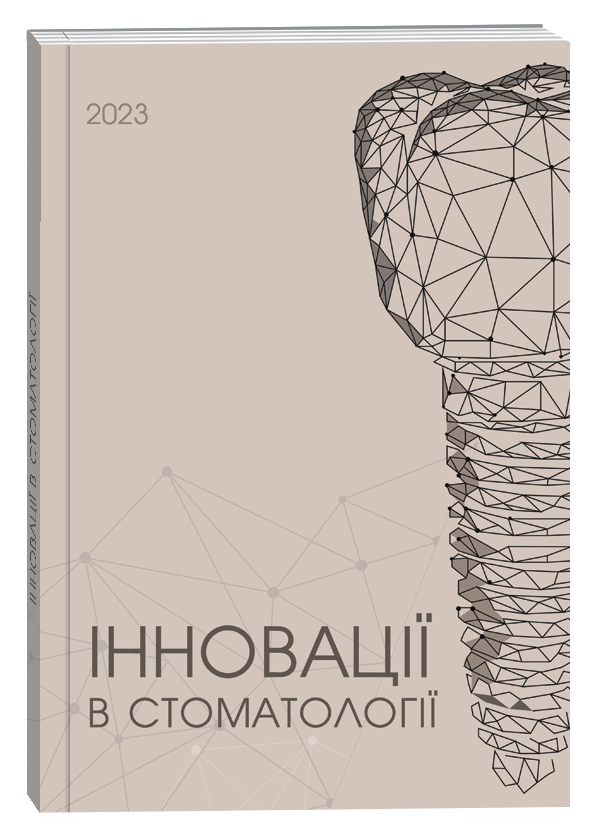EFFECTIVENESS OF THE FIRST CLASS APPLIANCE FOR DISTAL MOVEMENT OF PERMANENT MAXILLARY MOLARS IN CHILDREN WITH UNERUPTED SECOND PERMANENT MOLARS
DOI:
https://doi.org/10.35220/2523-420X/2024.4.15Keywords:
dentofacial anomalies, First Class Leone appliance, molar distalization, orthodontic treatment, childrenAbstract
Malocclusions in children represent a common problem in contemporary orthodontics, often leading to both functional and aesthetic disturbances while adversely affecting patients’ quality of life. One of the principal objectives in correcting a distal occlusion is to create additional space within the dental arch by distalizing the maxillary first permanent molars. The use of the First Class Leone appliance is viewed as a promising approach that significantly reduces reliance on patient compliance and provides controlled movement of the first permanent molars. The purpose of the study was to evaluate the effectiveness of the First Class Leone appliance in achieving distal displacement of the maxillary first permanent molars in children with unerupted second permanent molars. Materials and methods. This study included 9 patients aged 8–13 years presenting with a distal relationship of the maxillary first permanent molars and unerupted second permanent molars. Distalization was performed using the First Class Leone appliance. Lateral cephalometric radiographs were obtained before and after treatment; 8 angular and 8 linear parameters were measured and analyzed using Microsoft Office Excel 2016. Statistical significance was determined using Student’s t-test at p<0.01. Research results. The average amount of distal movement of the first permanent molars was 6.66±0.33 mm at a rate of 1.42 mm per month, while anchorage teeth underwent approximately 0.31 mm of mesial displacement for every 1 mm of molar distalization. The treatment duration ranged from 2.82 to 6.72 months. Angular measurements indicated moderate anterior tooth protrusion and slight premolar inclination; however, the first permanent molars moved primarily in a bodily manner with minimal tipping. Consequently, Class I molar relationships with overcorrection were successfully achieved in all patients. Conclusions. The First Class Leone appliance provides effective distalization of the maxillary first permanent molars in children with unerupted second permanent molars, reducing overall treatment time and lessening the dependence on patient cooperation. Adverse effects, including mild incisor protrusion and anchorage tooth inclination, proved to be moderate and could be managed at subsequent stages of treatment.
References
de Lira Ade L., Prado S., Araújo M.T., Sant’Anna E.F., Ruellas A.C. Distal movement of upper permanent molars using midpalatal mini-implant. Dental Press J Orthod. 2013. № 2. Vol. 18. P. 18.e1-5. doi: 10.1590/s2176-94512013000200006
Gianelly A.A. Distal movement of the maxillary molars. Am J Orthod Dentofacial Orthop. 1998. № 1. Vol. 114. P. 66-72. doi: 10.1016/s0889-5406(98)70240-9.
Alshammari A., Almotairy N., Kumar A., Grigoriadis A. Effect of malocclusion on jaw motor function and chewing in children: a systematic review. Clin Oral Investig. 2022. № 3. Vol. 26. P. 2335-351. doi: 10.1007/s00784-021-04356-y.
De Ridder L., Aleksieva A., Willems G., Declerck D., Cadenas de Llano-Pérula M. Prevalence of Orthodontic Malocclusions in Healthy Children and Adolescents: A Systematic Review. Int J Environ Res Public Health. 2022. № 12. Vol. 19. P. 7446. doi: 10.3390/ijerph19127446.
Londono J., Ghasemi S., Moghaddasi N., Baninajarian H., Fahimipour A., Hashemi S., Fathi A., Dashti M. Prevalence of malocclusion in Turkish children and adolescents: A systematic review and meta-analysis. Clin Exp Dent Res. 2023. № 4. Vol. 9. P. 689-700. doi: 10.1002/cre2.771.
Caruso S., Nota A., Ehsani S., Maddalone E., Ojima K., Tecco S. Impact of molar teeth distalization with clear aligners on occlusal vertical dimension: a retrospective study. BMC Oral Health. 2019. № 1. Vol. 19. P. 182. doi: 10.1186/s12903-019-0880-8.
Köle H. Surgical operations on the alveolar ridge to correct occlusal abnormalities. Oral Surg Oral Med Oral Pathol. 1959. № 5. Vol. 12. P. 515-29. doi: 10.1016/0030-4220(59)90153-7.
Фліс П.С. Ортодонтія. Вінниця: Нова книга, 2007. 312 с.
Рогач І.М., Керецман А.О., Сіткар А.Д. Правильно вибраний метод статистичного аналізу – шлях до якісної інтерпретації даних медичних досліджень. Науковий вісник Ужгородського університету. 2017. Вип. 2. С. 124-28.







